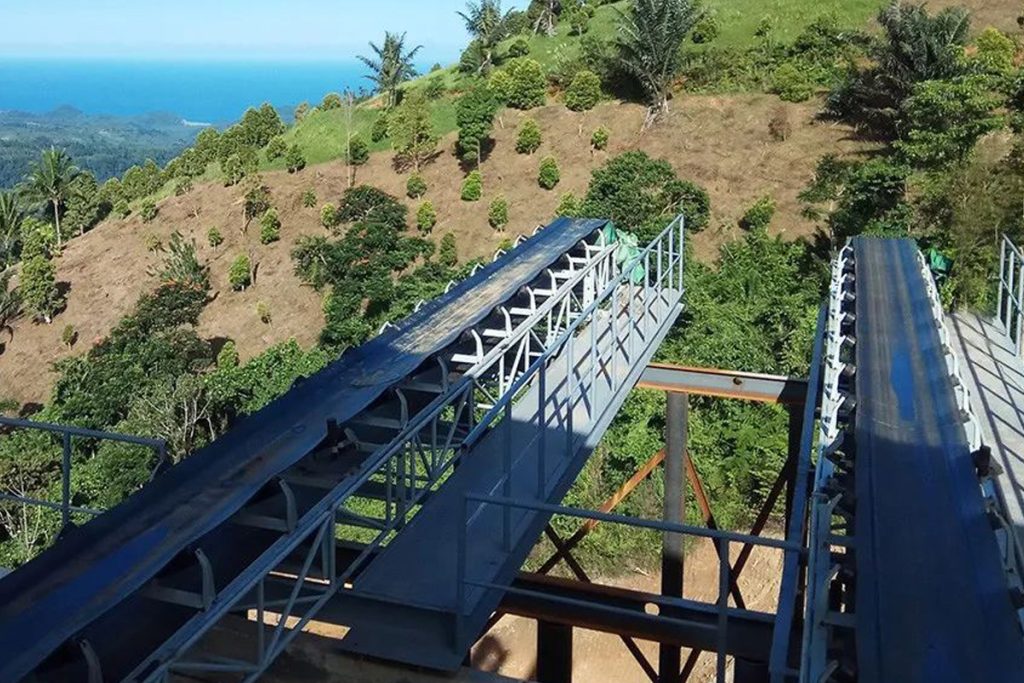The belt conveyors belongs to the conveying system, are essential components of various industries, facilitating the efficient movement of bulk materials and goods. These systems are designed to operate seamlessly, ensuring the smooth transportation of materials along a predetermined path. However, when a conveyor belt deviates from its intended path, it can lead to a range of problems that impact operational efficiency, safety, and maintenance.
Belt conveyors serve as the arteries of industrial operations, facilitating the movement of materials and products with precision. However, an often overlooked challenge is belt meandering, where the conveyor belt deviates from its intended path, causing a range of problems.
To combat this issue, innovative solutions such as roller machining have been devised to prevent meandering and ensure uninterrupted conveyor performance.
six major impacts caused by conveyor belt Meandering
Understanding Meandering: Belt meandering, also known as deviation, occurs when the conveyor belt shifts laterally during its operation, sliding from side to side along its intended direction. This deviation can stem from factors like uneven tension, misalignment, or external influences. While it might seem like a minor concern, belt meandering can lead to a chain reaction of troubles within a conveyor system.
- The Consequences of Meandering: The consequences of belt meandering extend beyond the mere deviation of the belt’s path. They encompass a series of challenges that disrupt the efficiency and functionality of the conveyor system:
- Damage to Belt Edges: The rubbing of the belt against the conveyor frame due to meandering can result in gradual wear and eventual damage to the belt edges.
- Material Spillage: Meandering can cause objects being conveyed to fall off the belt, leading to product loss, potential damage, and the need for additional cleanup efforts.
- Downtime and Rectification Costs: Rectifying meandering requires corrective measures, leading to operational downtime and increased costs, as the conveyor cannot operate during this period.
- Component Wear and Damage: Deviation places stress on the conveyor components, leading to accelerated wear and potential damage. Bearings, rollers, and the belt itself may experience increased wear, necessitating frequent maintenance and replacement.
- Uneven Material Distribution: Improper belt alignment can cause materials to be unevenly distributed across the conveyor, affecting the quality of the final product.
Safety Concerns : Risks to Personnel and Equipment
- Accidents and Injuries: Belt misalignment can create hazardous conditions for workers, as materials may spill unexpectedly or get trapped in the machinery, leading to accidents and injuries.
- Fire Hazards: Deviating belts can rub against components or structures, generating heat that could potentially lead to fires if the issue is not addressed promptly.
- Equipment Damage: Belt deviation can cause materials to impact other machinery along the conveyor line, potentially damaging other equipment and leading to costly repairs.

Roller Machining: A Solution to Prevent Meandering
- Crown Machining: One effective technique to combat belt meandering is crown machining. This process involves slightly scraping both edges of the roller’s steel pipe, creating a subtle gradient reminiscent of the shape . This gradient, known as the crown, encourages the conveyor belt to naturally slide toward the center during operation. By mitigating the lateral movement of the belt, crown machining effectively prevents meandering. The degree, area, and position of the crown gradient depend on the type of conveyor belt, whether rubber or resin, and the specific conveyor requirements.
- V Ditch Machining: An alternative method to prevent belt meandering is V ditch machining. This approach involves attaching additional components, to the backside of the conveyor belt. These components, known as backside crosspieces or V-shaped crosspieces, align with grooved rollers or pulleys. This alignment forms V-shaped ditches that prevent meandering by guiding the belt along a stable path. The size and material of these backside crosspieces vary based on the type of belt, conveying requirements, and the conveyed materials.
Conclusion
Belt conveyors play a pivotal role in numerous industries, and their reliable operation is essential for productivity and safety. Deviations from the intended path can lead to material loss, reduced efficiency, safety hazards, and equipment damage. By understanding the causes of belt deviation and implementing appropriate mitigation strategies, industries can maintain smooth operations, minimize downtime, enhance safety measures, and extend the lifespan of conveyor systems. A proactive approach to belt deviation management is crucial for sustaining efficient industrial processes.
In the intricate web of conveyor vibration systems, addressing belt meandering is pivotal to maintaining efficiency and reducing operational hiccups. The innovative techniques of roller machining, including crown machining and V ditch machining, provide practical solutions to tackle belt meandering head-on.
These techniques, by manipulating the roller geometry and introducing guiding components, enhance conveyor performance, minimize downtime, and ensure the seamless transportation of materials. In the dynamic landscape of industrial processes, the battle against belt meandering exemplifies the ingenuity of engineering in optimizing conveyor systems and ensuring the smooth flow of operations.